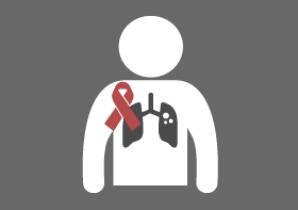
In the week of World TB Day, researchers from LSTM have been involved in two recentjournal publications looking at the mortality of Mycobacterium tuberculosis bloodstream infection in adults with HIV and rates of latent infection among those sharing homes with people with TB in South Africa.
A systematic review published in the journal Lancet Infectious Diseases looks at bloodstream infections (BSI) of TB in those who are critically ill with HIV, which is currently not completely understood.
The team, co-led by LSTM’s Dr. Joseph Lewis, reviewed all the current evidence relating to the subject and found that there was previously an underestimation of deaths due to BSIs in those critically ill with TB and HIV co-infection, as well as identifying the significance of a seemingly short delay (up to four days) of starting TB treatment on chances of recovery.
Dr. Lewis said: “Our study suggests that TB BSI is an under-recognised entity especially in critically unwell people in hospital with TB and HIV co-infection. People with TB BSI are at increased risk of death and these data suggest starting therapy quickly may be crucial. However, we really don’t know the best way to diagnose and treat TB BSI – we urgently need to develop and test new management strategies for these very unwell patients.”
While TB is the leading killer of people with HIV, it is also the world’s top infectious killer with around 1.5 million deaths in 2018. TB is easily transmissible between close contacts, and globally up to a quarter of the world’s population have a latent form of the disease with no symptoms. However latent TB can progress to active TB disease, particularly if the immune system becomes weakened for example through HIV infection.
The second study, the results of which have been published in the journal PLOS One, looks at the risk of latent TB infection among people who live in close contact with patients with active TB in South Africa.
Led by LSTM’s Dr. Peter MacPherson, the study found strong evidence of a very high burden of latent TB in household contacts, with worryingly high infection rates among young children. Importantly they found evidence that household contacts of HIV positive cases were less likely to have latent TB, than contacts of HIV negative cases.
Dr. MacPherson said: “Understanding latent disease is an important part of our efforts to reduce the global burden of TB, which is a curable and preventable disease. Although we have known previously that people living with HIV are highly susceptible to becoming sick with TB, it was not clear how HIV impacted the likelihood of TB being spread to close contacts, for example within households. Our research shows that people who were household contacts of HIV-negative TB patients were substantially less likely to have latent TB than people who were contacts of HIV-negative TB patients, after accounting for other important differences between these groups. This means that in addition to urgent public health action to reduce TB transmission generally in the community, new approaches are required to reach population groups at greatest risk of latent TB infection and deliver effective TB preventive treatments.”